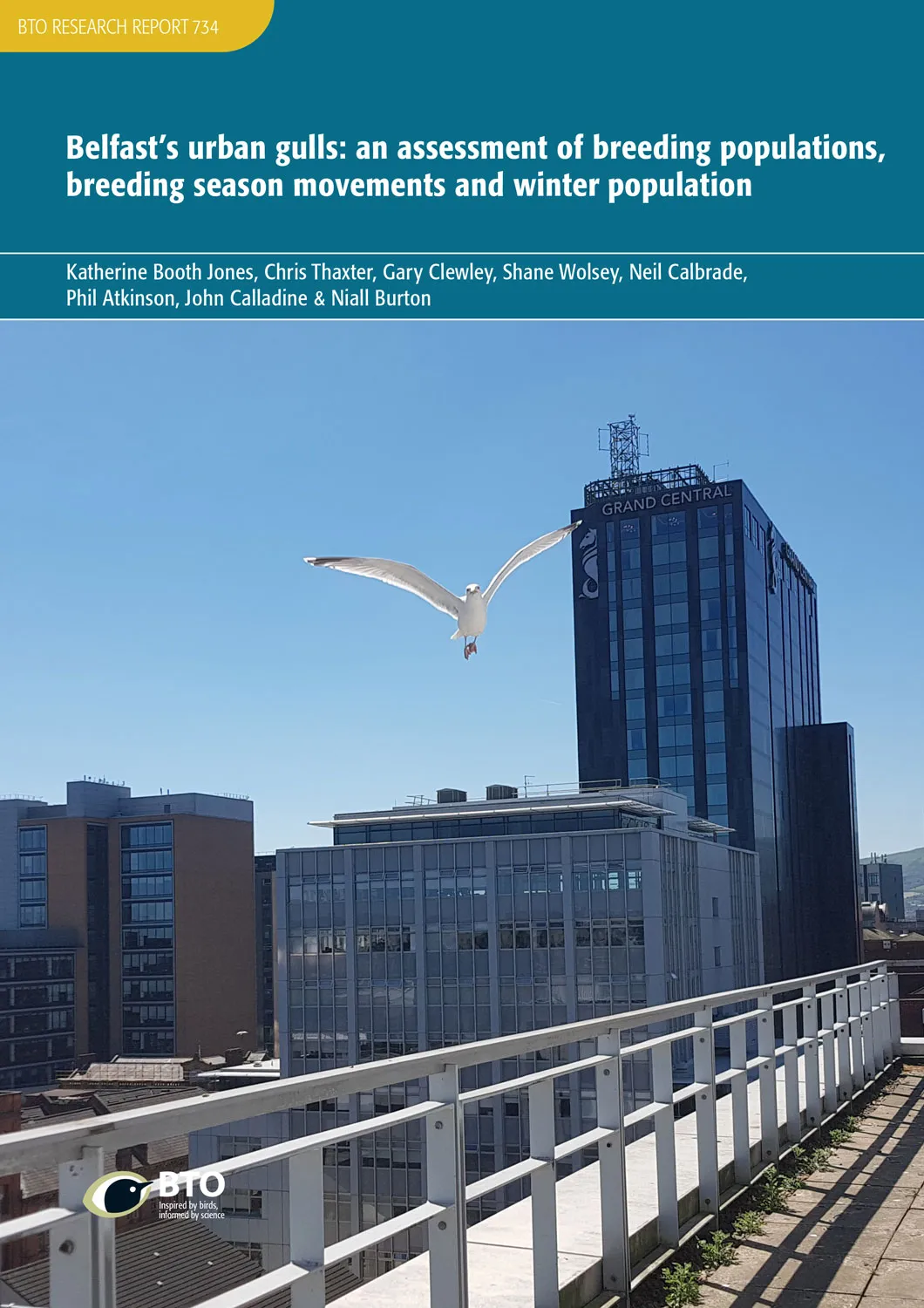BTO Research Reports are scientific papers that have been self-published by the BTO. The following is a full list of the published BTO research reports. Most are free to download, and links to Abstracts are included where possible.
Numbers missing from the list are those allocated but which were never produced or which have not been published. BTO recognises that, particularly in respect of commercially sensitive cases, a period of confidentiality is appropriate for some projects. However, in the interests of scientific development and dissemination of information, we encourage clients to permit publication as soon as it is reasonable to do so.
- If you wish to purchase a physical copy of a report please contact [email protected].
- More information about our Annual Service reports to JNCC 1992-2005.
Assessment of recent Hen Harrier population trends in England through population modelling
This study uses a population modelling approach to explore the effects of changes in rates of productivity, survival, and settlement on population growth in the English population of Hen Harriers.

Search
Highly pathogenic avian influenza in wild birds in the United Kingdom in 2022: impacts, planning for future outbreaks, and conservation and research priorities.
Author: Pearce-Higgins, J.W., Humphreys, E.M., Burton, N.H.K., Atkinson, P.W., Pollock, C., Clewley, G.D., Johnston, D.T., O’Hanlon, N.J., Balmer, D.E., Frost, T.M., Harris S.J. & Baker, H.
Published: 2023
The Joint Nature Conservation Committee (JNCC) and BTO organised a virtual workshop to develop thinking to support ongoing efforts to manage the highly pathogenic avian influenza (HPAI) outbreak, and to consider longer-term evidence requirements to enable positive conservation actions and species recovery. The HPAI workshop report includes discussions about the impacts of the disease, planning for future outbreaks, and conservation and research priorities.
02.03.23
Research reports Research reports
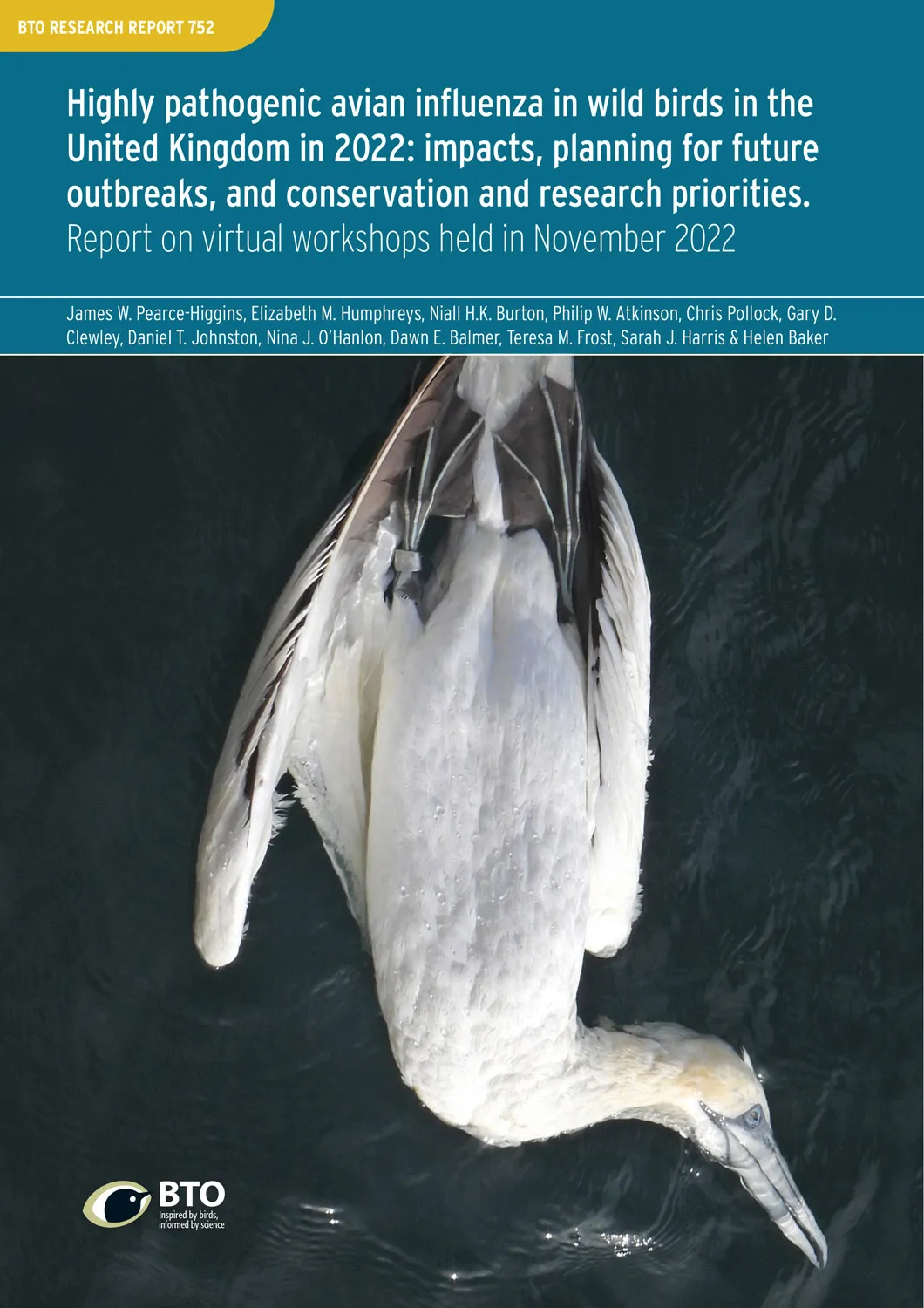
Bailiwick Bat Survey 2022 Report
Author: Newson, S.E., Allez, S.L., Coule, E.K., Guille, A.W., Henney, J.M., Higgins, L., McLellan, G.D., Simmons, M.C., Sweet, E., Whitelegg, D. & Atkinson, P.W.
Published: 2023
This report presents the main findings from survey work delivered using passive acoustic monitoring devices deployed across the Bailiwick of Guernsey. Through the surveys that we support we aim to improve knowledge and understanding of species distribution and activity, covering a range of taxonomic groups, including bats, small terrestrial mammals and insects. Through this approach we provide robust datasets that can be used to inform better decision-making processes.
23.01.23
Research reports Research reports
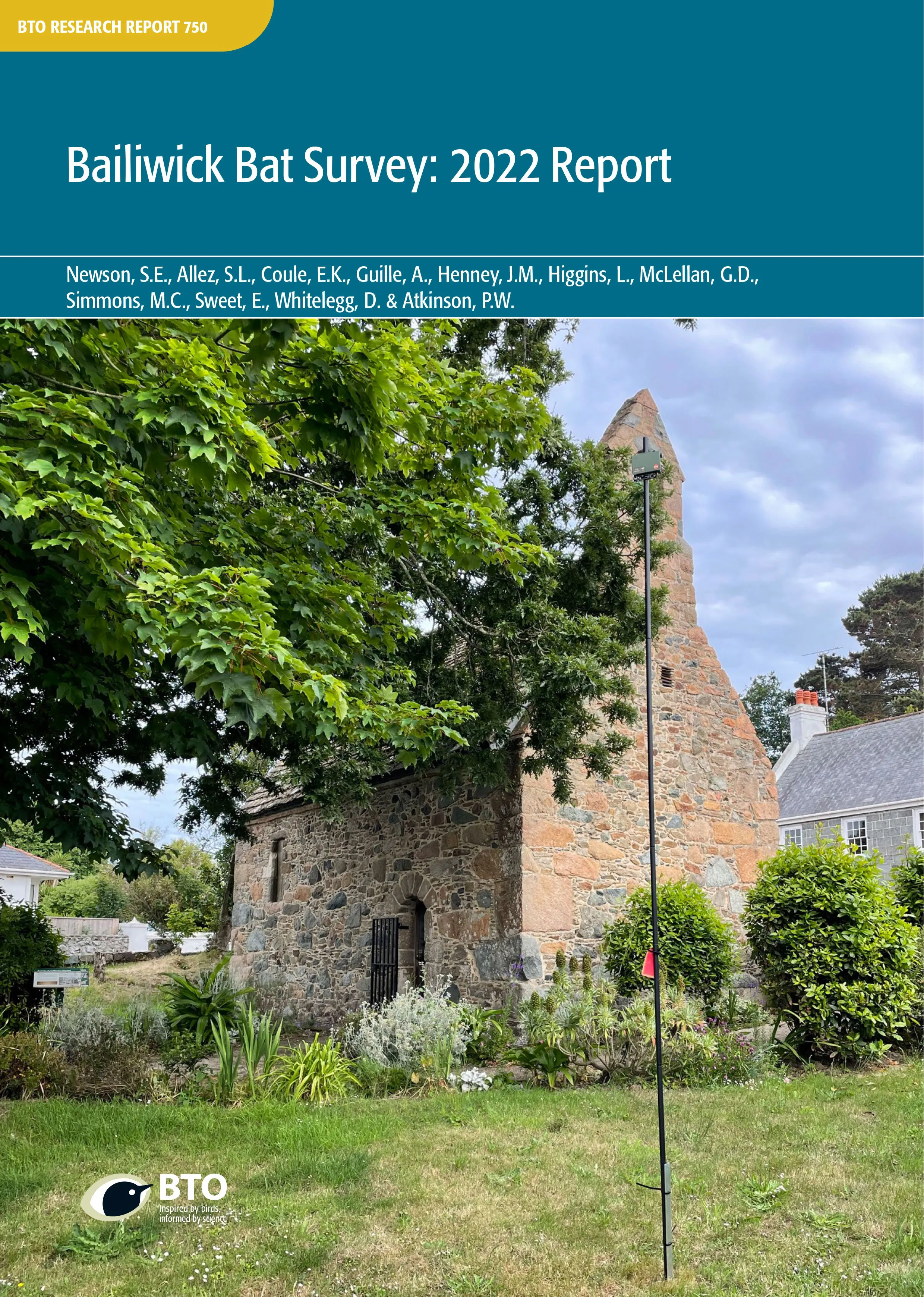
Ryevitalise – Bats and ancient trees: 2022 report
Author: Newson, S.E., Harris, G.T. & Panter, T.L.
Published: 2022
Working with a network of volunteers, static acoustic bat detectors were deployed over a long survey season, to provide the third season of extensive bat data for the Ryevitalise Landscape Partnership Scheme area of the North York Moors National Park. This report provides an overview of the survey coverage and main results from 2022.
07.12.22
Research reports Research reports
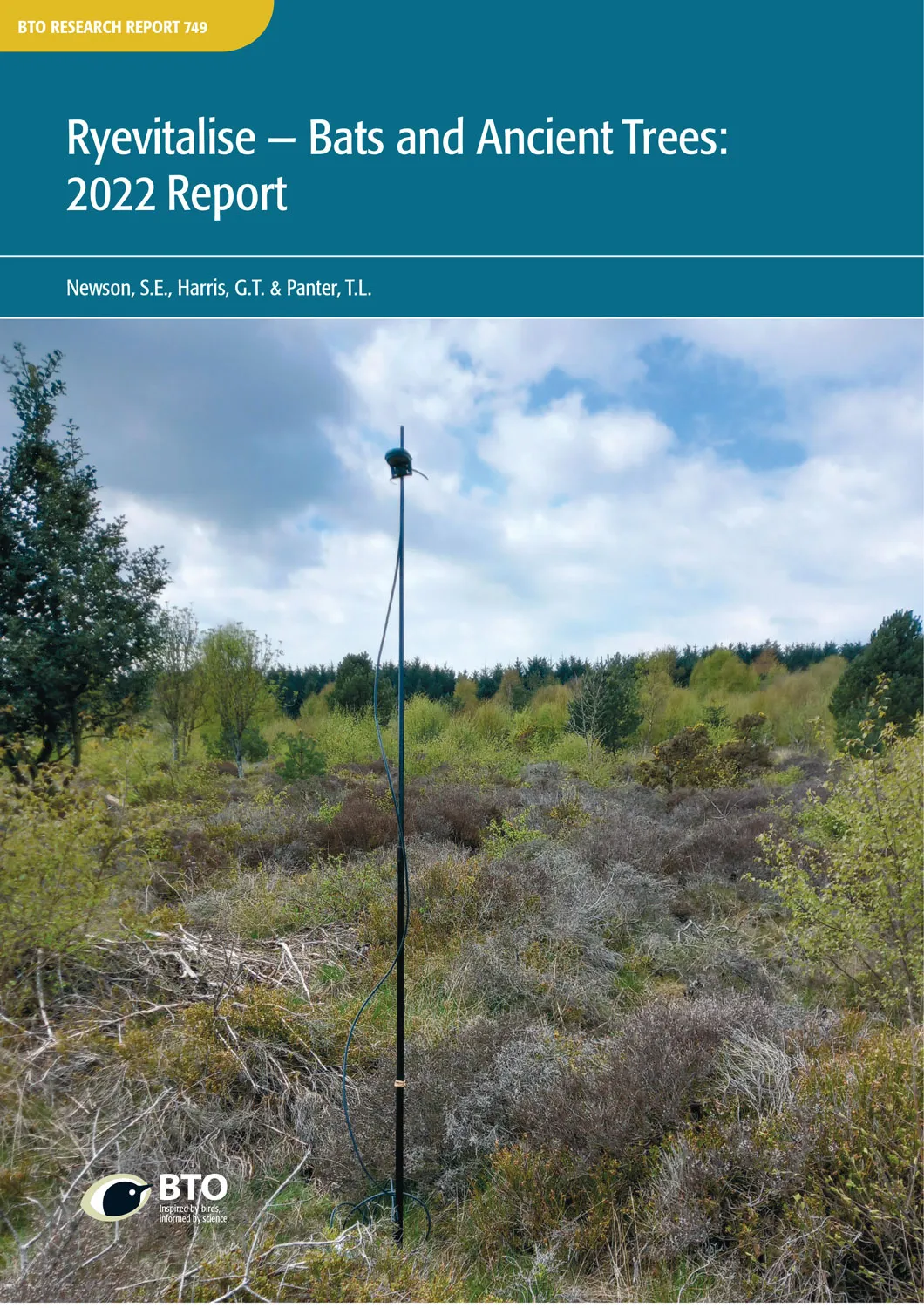
Scottish Raptor Monitoring Scheme Trends Summary 2009–2018
Author: Author(s): Challis, A., Wilson, M.W., Eaton, M.A., Etheridge, B., Kortland, K., Mattingley, W., Steele, L.D., Stevenson, A., Stirling-Aird, P., Thornton, M., Titherington, J., Wernham, C.V. and Wilkinson, N.I.
Published: 2022
This report presents trends for raptors in Scotland based on Scottish Raptor Monitoring Scheme (SRMS) data for the period 2009 to 2018. Trends cover breeding numbers and productivity (breeding success, clutch size, brood size and the number of fledglings) at national and regional (SRMS Region and Natural Heritage Zones) levels for 14 species (13 raptors plus Raven) that breed regularly in Scotland: Osprey, Golden Eagle, Sparrowhawk, Goshawk, Hen Harrier, Red Kite, White-tailed Eagle, Buzzard, Barn Owl, Tawny Owl, Kestrel, Merlin, Peregrine and Raven.
07.11.22
Research reports Research reports
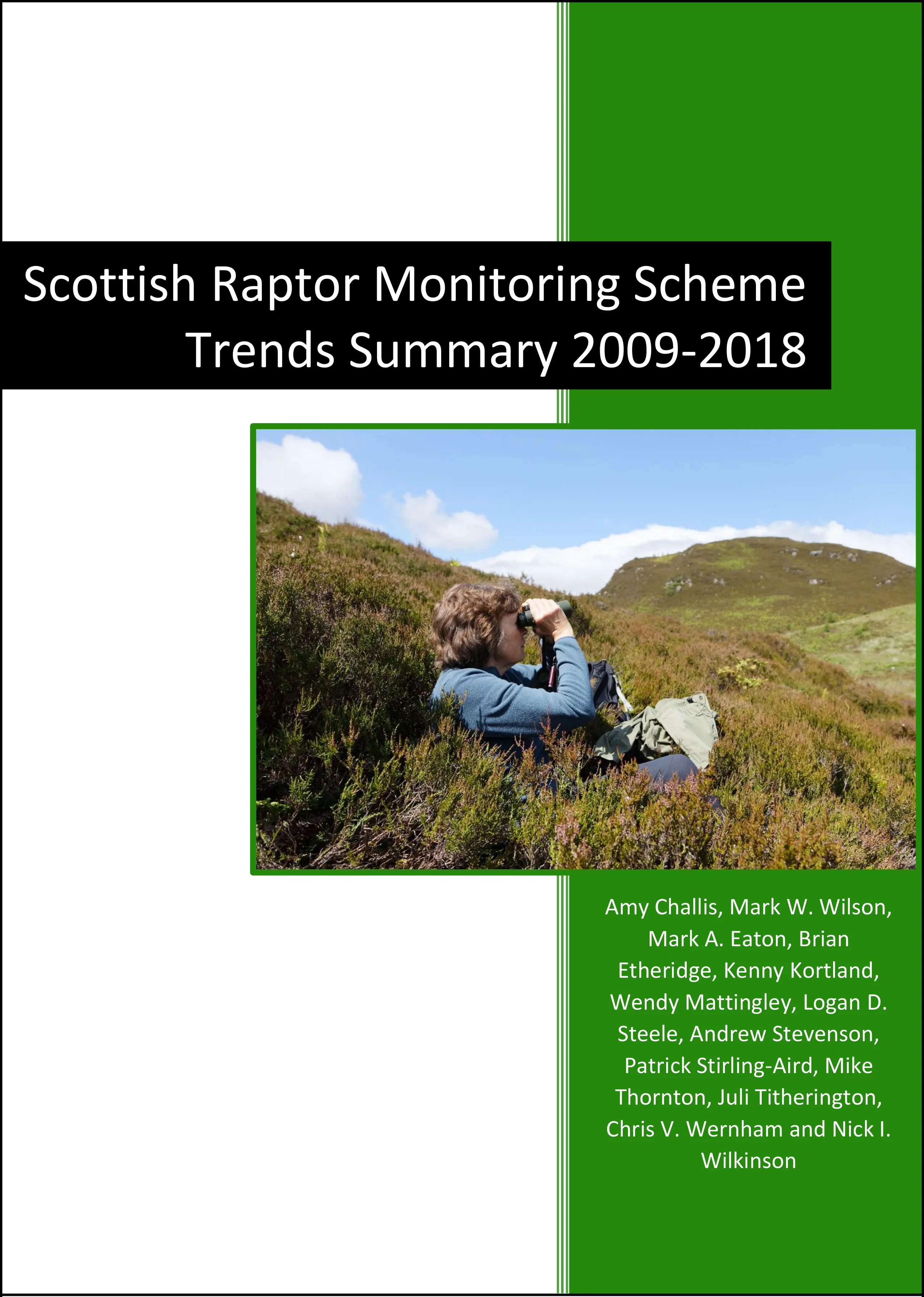
Belfast’s urban gulls: an assessment of breeding populations, breeding season movements and winter population
Author: Booth Jones, K., Thaxter, C., Clewley, G., Wolsey, S., Calbrade, N., Atkinson. P. & Burton, N.
Published: 2022
Despite the high conservation status of Herring and Lesser Black-backed Gulls, little is known about their urban populations Northern Ireland, and even less about how they use the urban environment. This project brings together a number of elements targeted at addressing knowledge gaps for the urban population of gulls in Northern Ireland, chiefly focusing on Belfast city centre. Firstly, breeding gulls in Belfast city centre were estimated using vantage point surveys, contributing to the latest national census and providing data for organisations wishing to reduce human-gull conflict. Secondly, the latest tracking technology was used to investigate how urban-nesting Lesser Black-backed Gulls and Herring Gulls use the urban environment of Belfast, complementing the population monitoring and existing tracking data from Herring Gulls breeding in a nearby coastal colony on Big Copeland Island. Thirdly, the wintering gull population using the shoreline of Belfast Lough was quantified using Wetland Birds Survey and Winter Gull Survey data, as congregations of gulls in the lough may interact with human activities in the lough. Combining these three elements, this study demonstrates that Belfast and the surrounding urban areas are providing not only nesting habitats for gulls, but also food resources which are used throughout the breeding season and during the winter. The presence of foraging gulls within the urban environment may be a symptom of poor waste management in certain regions of the city and may be a source of human-gull conflict.
20.05.22
Research reports Research reports
